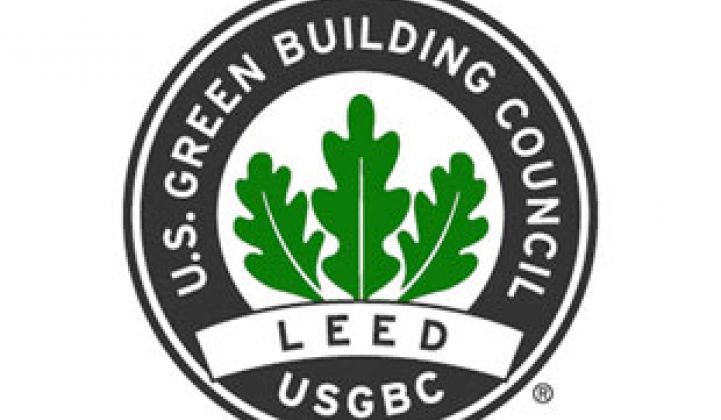In most major cities, it seems as though you can’t throw a stone without hitting a building that has been LEED-certified by the U.S. Green Building Council.
The seal is the best-known green building rating system in the U.S. and continues to expand in nearly every area of building. LEED is also used outside of the U.S., with more than nine billion square feet receiving certification in 2012.
Although LEED is seemingly everywhere, there are clear winners, as shown in the USGBC’s annual list of top states for new certifications.
Washington, D.C. leads the list again, with more than 22 million square feet of LEED space, which equals 36.97 square feet of LEED-certified property per resident in 2012. Virginia edged out Colorado this year for the number-two spot, with 3.71 square feet per resident in 2012. Although Virginia was far lower than the capital in per-capita ranking, it was one of the states that outstripped Washington, D.C. in sheer square footage with LEED certification.
Here is the full list:
|
Rank |
State |
Square feet of LEED space certified in 2012 |
Per capita |
|
1 |
District of Columbia |
22,246,445 |
36.97 |
|
2 |
Virginia |
29,709,574 |
3.71 |
|
3 |
Colorado |
10,553,881 |
2.10 |
|
4 |
Massachusetts |
13,395,597 |
2.05 |
|
5 |
Illinois |
24,949,997 |
1.94 |
|
6 |
Maryland |
10,954,324 |
1.90 |
|
7 |
New York |
34,378,286 |
1.77 |
|
8 |
Washington |
10,521,177 |
1.56 |
|
9 |
California |
54,252,993 |
1.46 |
|
10 |
Texas |
36,017,979 |
1.43 |
"Buildings are a primary focus of our Mayor's Sustainable DC initiative," Keith Anderson, interim director of the District of Columbia Department of the Environment, said in a statement. "We are indeed thrilled to be leading the nation in per-capita LEED-certified space. Our private and public building sectors are boldly leading with the development of high-performing green buildings, and we have aligned governmental policies to support such innovation."
Washington, D.C. and Virginia benefit from government policies that require federal buildings to increase efficiency. Of course, efficiency is just one portion of a LEED rating, which also includes everything from green building materials to bike racks.
Energy efficiency has not always been a significant part of LEED-certified buildings, but the focus on cutting energy use in LEED projects has grown in recent years. As the USGBC incorporates more energy efficiency measures, it is also looking at allowing demand response programs to quality for LEED credits and software platforms that can help LEED homes with constant commissioning.
In recent years, LEED certification has also shifted from primarily new construction to retrofits. Some of the projects in 2012 included the U.S. Mint Building in Washington, D.C. and the Levi Strauss headquarters in San Francisco.
The rankings give a snapshot of the previous year, but are also subject to large projects that can skew the numbers. Atlantic Wharf in Boston, which received LEED Platinum status in 2012, is 1.2 million square feet, or nearly 9 percent of Massachusetts’ new LEED space last year. New York, which moved up to No. 3 from seventh place last year, had about two million square feet less in LEED certification in 2012 than it did in 2011.
The real story with LEED will be on how it can expand its programs to mesh with a changing energy market, including using demand response as a base credit starting this year. Demand response is not alone. Solar-ready homes, distributed generation and monitor-based commissioning are also pilot credits to watch in 2013.



